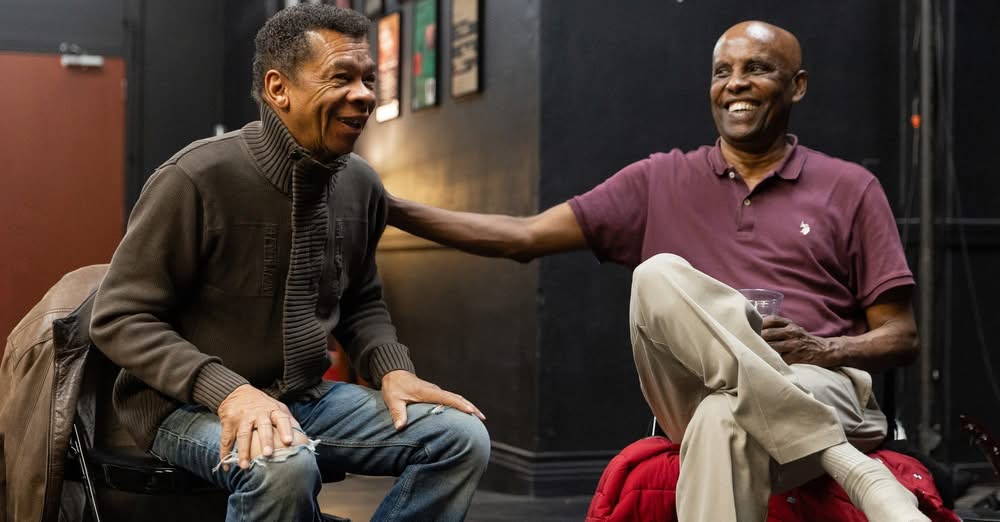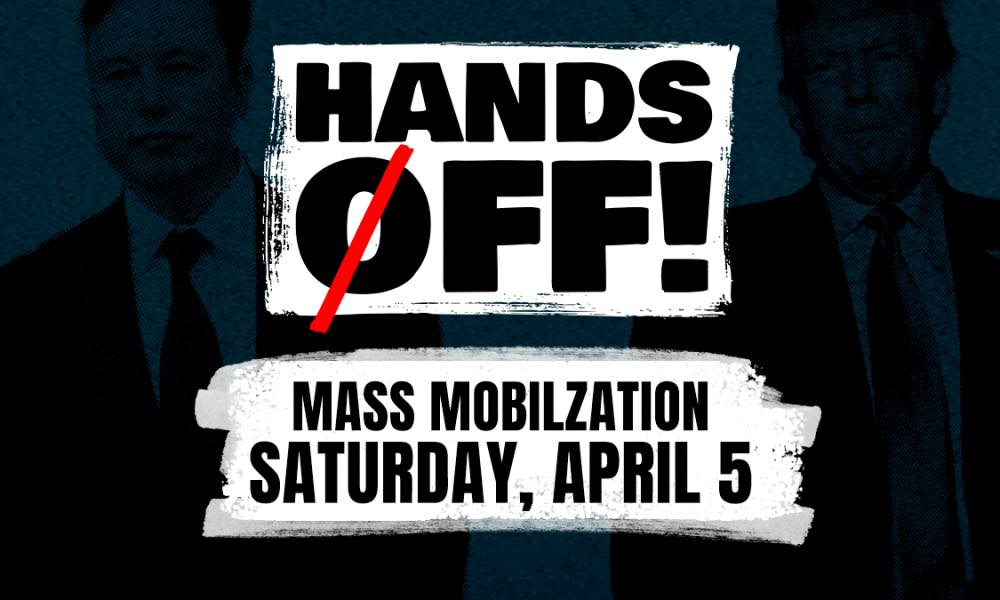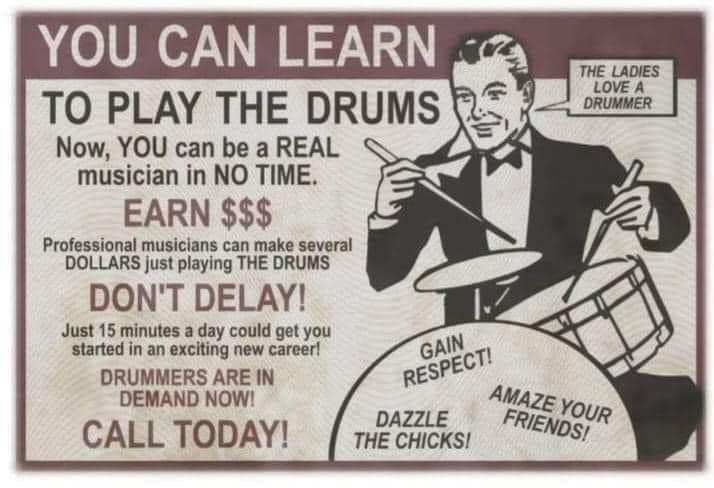Blog
Amadou Bagayoko of music duo Amadou & Mariam dies aged 70
Amadou Bagayoko (guitar and vocals) (24 October 1954 – 4 April 2025)
Malian singer and guitarist, who sold millions of albums with his wife, Mariam Doumbia, had been ill for a while, say family.
The guitarist and singer Amadou Bagayoko of the Malian music duo Amadou & Mariam has died aged 70 after an illness, his family said, paying tribute to the Grammy-nominated blind musician.
Amadou and his wife, Mariam Doumbia, formed a group whose blend of traditional Malian music with rock guitars and western blues sold millions of albums across the world.
Among other achievements the couple, who met at the institute for the young blind in the Malian capital, Bamako, composed the official song for the 2006 football World Cup in Germany and played at the closing ceremony concert for the 2024 Olympic Games in Paris.
“He had been ill for a while,” Amadou’s son-in-law Youssouf Fadiga told Agence-France Presse.
Ram Dass (born Richard Alpert; April 6, 1931 – December 22, 2019), also known as Baba Ram Dass, was an American spiritual teacher, guru of modern yoga, psychologist, and writer. His best-selling 1971 book Be Here Now, which has been described by multiple reviewers as “seminal”, helped popularize Eastern spirituality and yoga in the West. He authored or co-authored twelve more books on spirituality over the next four decades, including Grist for the Mill (1977), How Can I Help? (1985), and Polishing the Mirror (2013).
Ram Dass was personally and professionally associated with Timothy Leary at Harvard University in the early 1960s. Then known as Richard Alpert, he conducted research with Leary on the therapeutic effects of psychedelic drugs. In addition, Alpert assisted Harvard Divinity School graduate student Walter Pahnke in his 1962 “Good Friday Experiment” with theology students, the first controlled, double-blind study of drugs and the mystical experience. While not illegal at the time, their research was controversial and led to Leary’s and Alpert’s dismissal from Harvard in 1963.
In 1967, Alpert traveled to India and became a disciple of Hindu guru Neem Karoli Baba, who gave him the name Ram Dass, meaning “Servant of Ram,” but usually rendered simply as “Servant of God” for Western audiences. In the following years, he co-founded the charitable organizations Seva Foundation and Hanuman Foundation. From the 1970s to the 1990s, he traveled extensively, giving talks and retreats and holding fundraisers for charitable causes. In 1997, he had a stroke, which left him with paralysis and expressive aphasia. He eventually grew to interpret this event as an act of grace, learning to speak again and continuing to teach and write books. After becoming seriously ill during a trip to India in 2004, he gave up traveling and moved to Maui, Hawaii, where he hosted annual retreats with other spiritual teachers until his death in 2019.
more...
Happy Birthday Carson
My oldest grandson turns 18 yrs old today Wow!
Carson lives in Pittsburgh.
Love you Carson

Sunday April 6th 2025 7pm. Performing tonight with Ahmed Yusuf and Ahmed Mohamed and several Somali singers. Pictured in my rehearsal studio.
“Meet You at the Crossroads.” The concert is co-produced by the University of St. Thomas’ Jay Phillips Center for Interreligious Studies and the Cultural Fluency Initiative. In the Schoenecker Science Center Performance Hall.
In a Minneapolis rehearsal room, a group of Somali musicians gathers in a circle, playing music rooted in the cafés of Mogadishu. The sound is emotional, rhythmic and steeped in memory. It’s called “Somali blues.”
“The lyrics are just showing you what it means,” says Ahmed Ismail Yusuf, the group’s leader. The style is similar to what you might have heard in Somalia before the civil war.
“It is this lugubrious, lamentation [of] love not returned.”
Yusuf and the small outfit — called Araa — are rehearsing for an upcoming concert, “Meet You at the Crossroads.” The concert is co-produced by the University of St. Thomas’ Jay Phillips Center for Interreligious Studies and the Cultural Fluency Initiative.
“This is really about the life of the city. There are more cultural groups in the Twin Cities than ever,” said David Jordan Harris, who works with the Jay Phillips Center and curated the concert. “Yet, do we know each other? How do we learn about each other? And you know, no better method than our musical traditions.”
“Meet You at the Crossroads” will bring together Somali blues and songs inspired by Black gospel music. The idea came from a previous experiment Harris developed with Beck Lee, who runs the Cultural Fluency Initiative.
“We did sort of a proof of concept concert salon a little while ago where we where we juxtaposed Sephardic music and Somali music,” Lee said. “It was just interesting to be able to experience those two musical cultures and juxtaposition and talk about it.”
This time, Lee and Harris invited Yusuf to lead the Somali music, and JD Steele to bring the Black soul repertoire.

It’s galaxy season, and two of my favorites are M81 (upper left) and M82 (lower right), a pair of galaxies located in the constellation, Ursa Major. M81 (Bode’s Galaxy) is a face-on spiral galaxy, about half the diameter of our Milky Way, and lies approximately 11.8 million light-years away, while M82 (The Cigar Galaxy) is an irregular edge-on galaxy at roughly the same distance. These galaxies have a gravitational lock on each other and interact, affecting the shape and composition of one another. This image was shot last night, over about 6 hours, from our front yard with the telescope in the shadow of the nearly full moon.

Beverly “Guitar” Watkins (April 6, 1939 – October 1, 2019 Atlanta) was an American blues guitarist. Sandra Pointer-Jones wrote, “Beverly Watkins is a pyrotechnic guitar maven whose searing, ballistic attacks on the guitar have become allegorical tales within the blues community.” George Varga, reviewing her debut CD, observed that Watkins “sings and plays with enough poise and verve to make musicians half her age or younger consider alternative means of employment.”
more...Randolph Edward “Randy” Weston (April 6, 1926 – September 1, 2018 NY) was an American jazz pianist and composer whose creativity was inspired by his ancestral African connection.
Weston’s piano style owed much to Duke Ellington and Thelonious Monk, whom he cited in a 2018 video as among pianists he counted as influences, as well as Count Basie, Nat King Cole and Earl Hines. Beginning in the 1950s, Weston worked often with trombonist and arranger Melba Liston.
Described as “America’s African Musical Ambassador”, Weston once said: “What I do I do because it’s about teaching and informing everyone about our most natural cultural phenomenon. It’s really about Africa and her music.”
more...John Paul Pizzarelli Jr. (born April 6, 1960) is an American jazz guitarist and vocalist. He has recorded over twenty solo albums and has appeared on more than forty albums by other recording artists, including Paul McCartney, James Taylor, Rosemary Clooney; his father, jazz guitarist Bucky Pizzarelli; and his wife, singer Jessica Molaskey.
more...Charlie Rouse (April 6, 1924 – November 30, 1988 D.C.) was an American hard bop tenor saxophonist and flautist. His career is marked by his collaboration with Thelonious Monk, which lasted for more than ten years.
more...Arthur S. Taylor Jr. (April 6, 1929 – February 6, 1995 NY) was an American jazz drummer, who “helped define the sound of modern jazz drumming”. As a teenager, Taylor first decided that he wanted to become a musician after hearing Sid Catlett play at a jam session at the current site of the Lincoln Center. He joined a local Harlem band that featured Sonny Rollins, Jackie McLean and Kenny Drew. After playing in the bands of Howard McGhee (1948), Coleman Hawkins (1950–51), Buddy DeFranco (1952), Bud Powell (1953–58; 1961; 1964), George Wallington and Art Farmer (1954), Wallington again (1954–55), Gigi Gryce and Donald Byrd (1956), he formed his own group, Taylor’s Wailers. Between 1957 and 1963, he toured with Donald Byrd, recorded with Miles Davis, Gene Ammons and John Coltrane, and performed with Thelonious Monk; Taylor also was a member of the original Kenny Dorham Quartet of 1957.
more...
Performing with Somali Blues this Sunday April 6th 7pm at “Meet You at the Crossroads.” The concert is co-produced by the University of St. Thomas’ Jay Phillips Center for Interreligious Studies and the Cultural Fluency Initiative. In the Schoenecker Science Center Performance Hall.
In a Minneapolis rehearsal room, a group of Somali musicians gathers in a circle, playing music rooted in the cafés of Mogadishu. The sound is emotional, rhythmic and steeped in memory. It’s called “Somali blues.”
“The lyrics are just showing you what it means,” says Ahmed Ismail Yusuf, the group’s leader. The style is similar to what you might have heard in Somalia before the civil war.
“It is this lugubrious, lamentation [of] love not returned.”
Yusuf and the small outfit — called Araa — are rehearsing for an upcoming concert, “Meet You at the Crossroads.” The concert is co-produced by the University of St. Thomas’ Jay Phillips Center for Interreligious Studies and the Cultural Fluency Initiative.
“This is really about the life of the city. There are more cultural groups in the Twin Cities than ever,” said David Jordan Harris, who works with the Jay Phillips Center and curated the concert. “Yet, do we know each other? How do we learn about each other? And you know, no better method than our musical traditions.”
“Meet You at the Crossroads” will bring together Somali blues and songs inspired by Black gospel music. The idea came from a previous experiment Harris developed with Beck Lee, who runs the Cultural Fluency Initiative.
“We did sort of a proof of concept concert salon a little while ago where we where we juxtaposed Sephardic music and Somali music,” Lee said. “It was just interesting to be able to experience those two musical cultures and juxtaposition and talk about it.”
This time, Lee and Harris invited Yusuf to lead the Somali music, and JD Steele to bring the Black soul repertoire.

Adolph Stanley Levey known professionally as Stan Levey (April 5, 1926 – April 19, 2005) was an American jazz drummer. He was known for working with Charlie Parkerand Dizzy Gillespie in the early development of bebop during the 1940s, and in the next decade had a stint with bandleader Stan Kenton. Levey retired from music in the 1970s to work as a photographer.
more...More Posts
- Cosmos M31/Milky Way
- Steve Vai
- Monty Alexander
- Grant Green
- World Music Noori & his Dorpa Band
- Daily Roots Michael Prophet
- Diego LaBriola Memorial 6-5-22
- Cosmos NGC 3372
- Laurie Anderson
- Peter Erskine
- Jerry González
- SAVE UKRAINE GO_A
- Daily Roots Dennis Matumbi
- Patty Lacy
- Cosmos Tau Herculids
- Mikey Dread
- Paquito D’Rivera
- Anthony Braxton
- Oliver Nelson
- STAND WITH UKRAINE The Hardness




